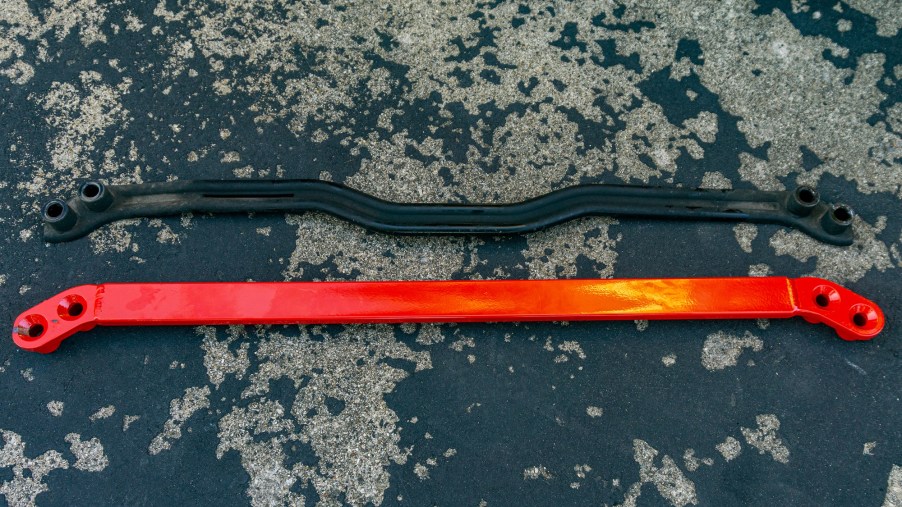
Mighty Easy Car Mods: Is a Stiffer Lower Subframe Brace Worth It?
Aftermarket lower subframe brace installation and review highlights:
- A subframe brace, whether aftermarket or standard, limits chassis flex to sharpen a car’s handling
- With stiffer braces running in the $100-$200 range, this is one of the cheaper car mods out there—and you can install it yourself in less than an hour
- Thanks to a $180 stiffer lower subframe brace, my Fiat 500 Abarth understeers and rolls less, turns into corners faster, has more steering feedback, and feels sportier and more solid overall
If you have the money and time, the sky’s the limit when it comes to modifications. But what about those of us who commute in the projects we wrench on (not always skillfully) ourselves? Well, don’t worry, you can still give your car some sweet, cheap mods without leaving it on jacks all weekend. And I just installed one on my Fiat 500 Abarth: a stiffer lower subframe brace.
What does a subframe brace do?
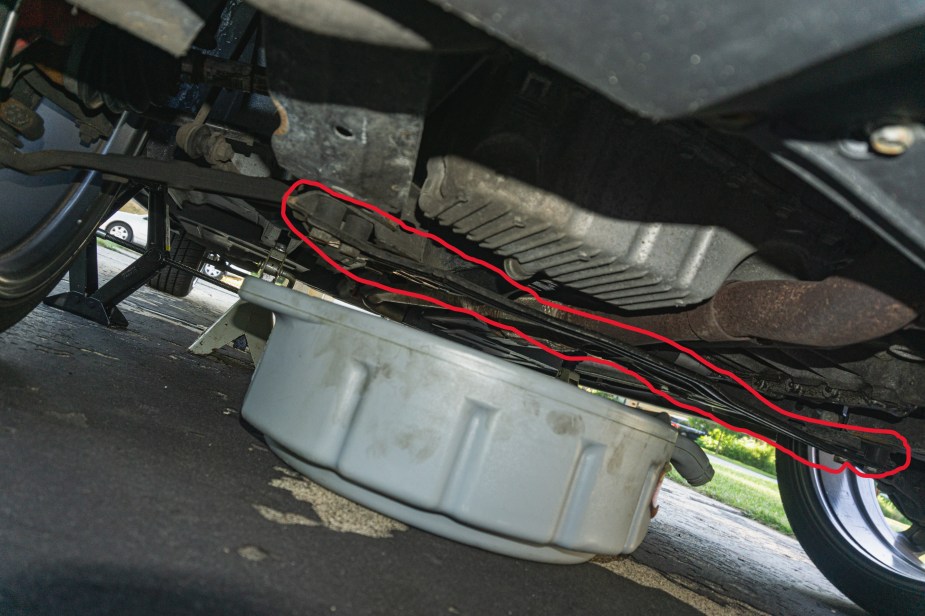
Whether your car rides on struts or coilovers, whether it’s a unibody or body-on-frame vehicle, it has subframes. They’re part of the chassis and carry your car’s axles, suspension, and powertrain components. And like other parts of your car’s chassis and suspension, they flex under stress, like when you hit a bump or go around a corner.
As anyone who’s driven a Miata will tell you, some chassis flex is good, as it helps communicate weight transfer. However, too much flex messes with your handling and steering, making your car wallow around turns and waste precious seconds. Hence why some of the most popular car mods are chassis braces, such as roll cages and strut-tower braces. But they’re not the only ones.
Like a strut-tower brace, a subframe brace is basically a metal bar, or in some cases, several bars linked together. Only instead of connecting the tops of the struts, it links the opposite sides of the front or rear subframe. In theory, by spreading the twisting force across the subframe, the brace limits the total amount of flex. As a result, the car doesn’t roll as much, its suspension doesn’t move as much, and its tires keep gripping strongly.
What are the pros and cons of a stiffer subframe brace?
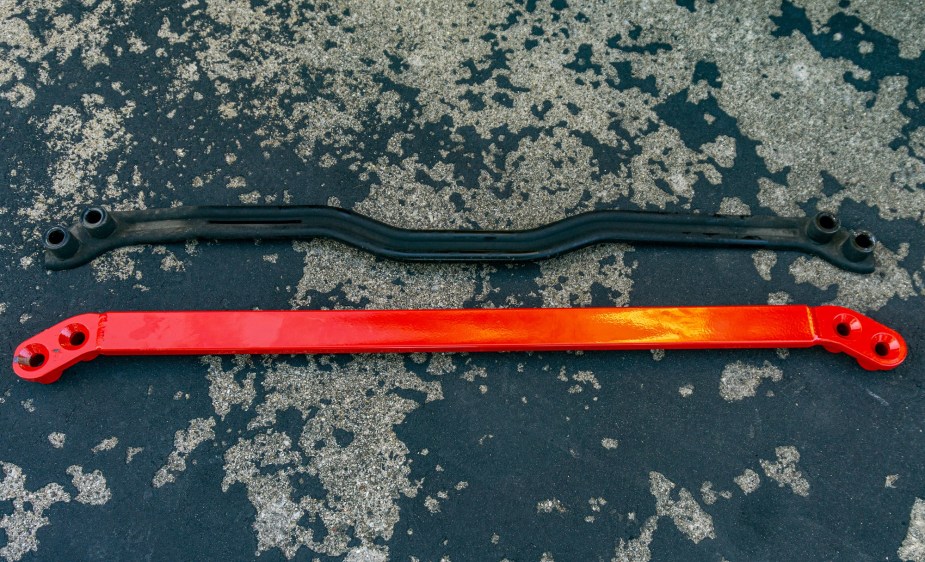
Because a stiffer chassis makes for sportier handling, many performance cars come with subframe braces or offer them as options. My 2013 Fiat 500 Abarth, for example, came standard with one. And while the Mustang GT only gets a ‘K-brace’ with the optional Performance Pack, it’s standard on the Mustang Mach 1.
However, as you can see from the above photo, some standard subframe braces are a bit, um, underwhelming. Hence why many install stiffer ones in their cars, especially if they’re going to the track. And because of the handling benefits, these braces are also common mods on cars that didn’t offer them from the factory.
But like some other race car-style modifications, stiffer subframe braces can have some drawbacks. For one, their beefy natures mean they can slightly decrease your ground clearance. Secondly, a stiffer chassis transmits and reacts more to road imperfections. In addition, these stockier braces weigh more than the stock ones. And to maximize their benefits, you ideally should also have a strut-tower brace, CarBibles says.
One thing that isn’t a major drawback, though, is the price.
How much does a stiffer one cost?
Like other car mods, the price of a subframe brace varies from model to model. And as noted earlier, some braces aren’t just simple straight bars. But even the more complex K-braces aren’t terribly expensive.
On average, an aftermarket lower subframe brace runs around $100-$200. The one I put on my 500 Abarth, a Corsa Forza V1, cost me $180. Meanwhile, a four-point BMR Mustang front subframe brace costs $220 at the time of writing. That’s less than some individual summer performance tires cost.
How do you install a lower subframe brace?
If you’re installing a subframe brace on a car that didn’t originally have one, you might need to drill and tap some holes. But in many cases, including if you’re upgrading an existing brace, the job only requires a few hand tools:
- Torque wrench
- Socket wrench and appropriate sockets
- Gloves
- Screws
- Breaker bar (optional)
The Corsa Forza subframe brace I installed on my 500 Abarth was a front one, but a rear installation follows the same general procedure. First, jack your car up and secure it on some stands. Next, locate the existing brace. Then, unscrew it and install the new one—just make sure it’s in the correct orientation. And after tightening the screws down to the proper torque, lower your car back down to earth.
Theoretically, installing an aftermarket subframe brace can take less than 30 minutes. It took me slightly longer as one stubborn screw repeatedly tried to cross-thread itself. If that happens, just back the new screw out and use the old one to re-align the threads. You can also consider bringing a thread repair kit along as extra insurance.
Was putting a stiffer brace on my Fiat 500 Abarth worth it?
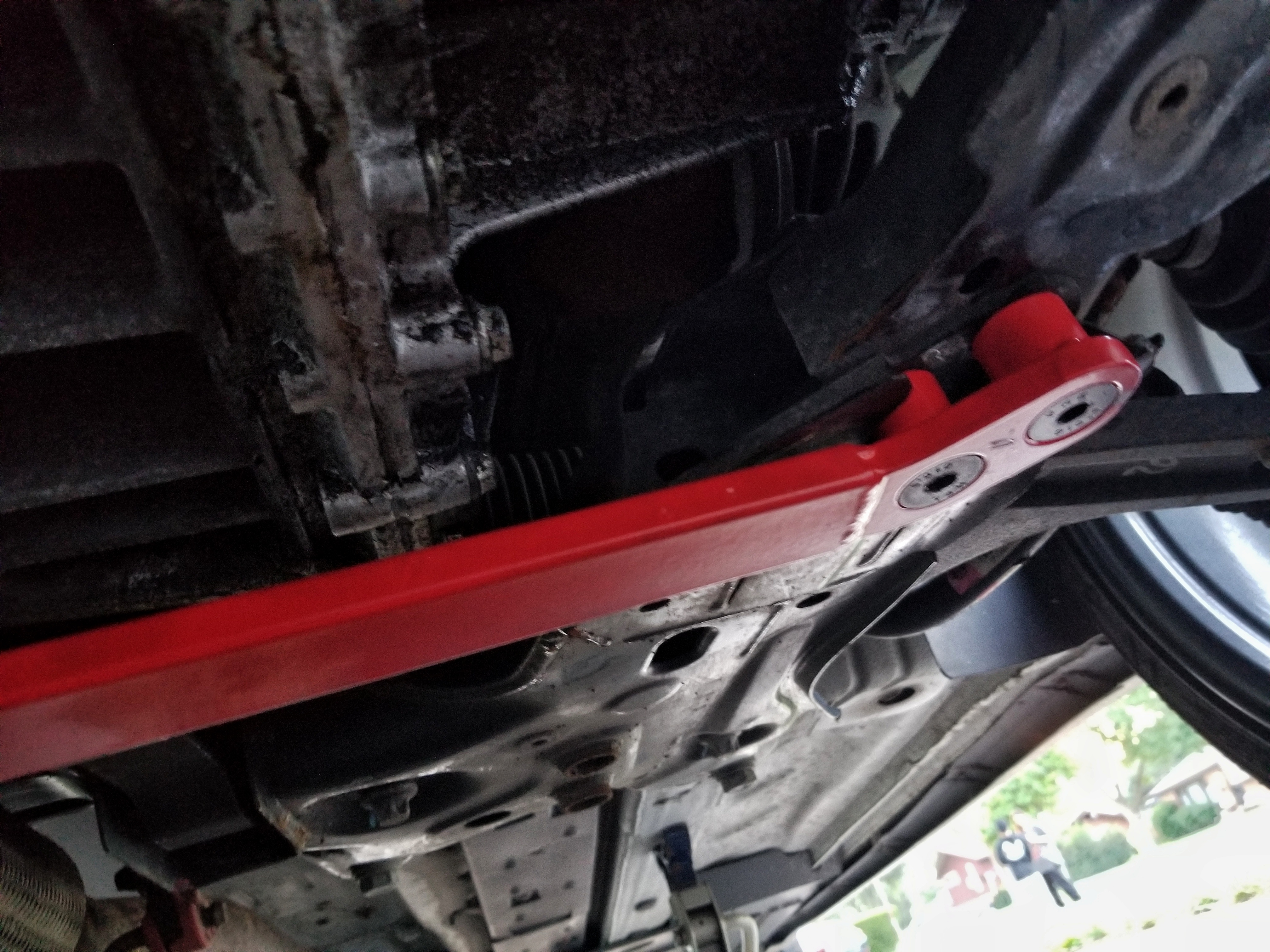
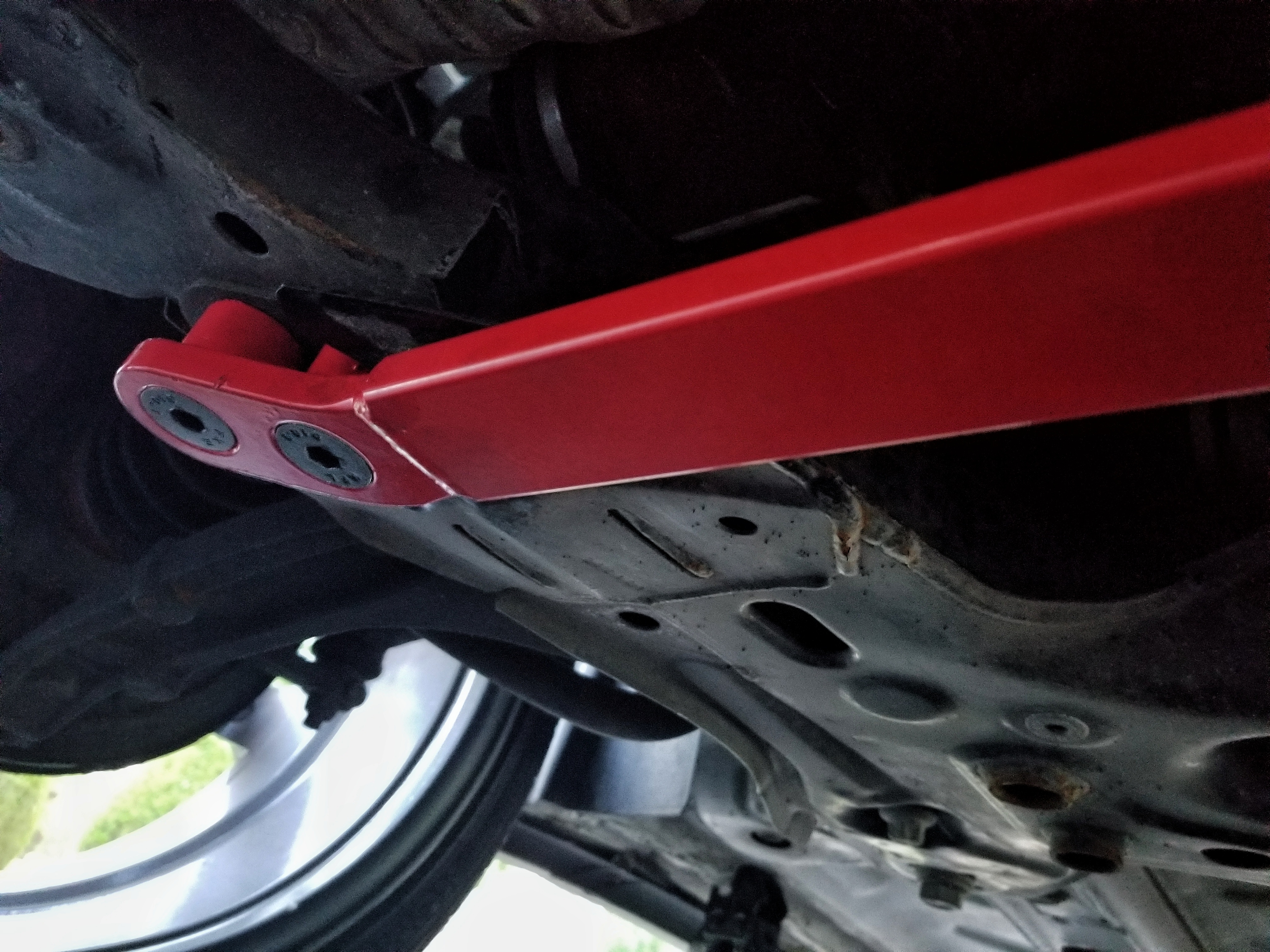
My rebuilt 500 Abarth has been fun to drive in stock form, especially in Sport Mode. But it also understeers more than I’d like, and even in Sport Mode, the steering is a bit too light. Other Abarth owners claimed that installing a stiffer lower subframe brace would help with both issues. And it turns out those claims hold a lot of water.
No, the Corsa Forza brace hasn’t dramatically transformed the Abarth. However, its steering isn’t just noticeably weightier—it’s also more direct and has more feedback. It’s not Miata level, mind you, but there’s actual road texture coming through. In addition, my hot hatch now understeers and rolls less through the corners and turns into them slightly faster. But arguably the biggest difference is how much more solid and cohesive it feels behind the wheel. There’s a ‘carved from a solid block’ sensation that just wasn’t there before.
One downside of the extra chassis stiffness is that the Abarth reacts slightly more to bumps. However, the ride hasn’t gotten harsher or stiffer. Furthermore, the added rigidity means the car doesn’t buzz or shake nearly as much over those bumps or potholes. Combined with that new perception of solidity, it makes the spicy 500 feel like a more expensive, higher-quality sports car. That’s totally worth a bit more road-surface sensitivity.
Earlier, I noted that this subframe brace cost less than some new tires. But one new tire wouldn’t change my car’s behavior as much as the brace did. And unlike a tire change, I don’t have to go to a shop to remove it. I could re-install the original brace in less than an hour.
Admittedly, a stiffer subframe brace might not improve an expensive, high-powered car as much as it does an inexpensive one. But even so, if you want an easy, cheap DIY way to sharpen your car’s handling, this mod is worth it.
Follow more updates from MotorBiscuit on our Facebook page.


